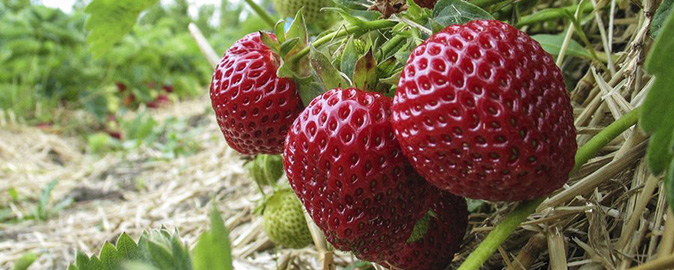UNIFORCE

- Acronym: UNIFORCE
- Title: Unification of IPM Forces to Control Mites in Berries, Soft Fruits and Woody Ornamentals
- Countries involved: BE, CH, NL, ES
- Total budget: € 510,443
Uncovering the secret life of mites
What do azalaeas, strawberries and black currant have in common? The answer is that they are all at risk of becoming infected with small mites from the Eriophydiae, Tetranychidae and Tarsonemidae families. Mites from these families affect a wide range of plants, causing galls, tissue damage, necrosis or distortion of growing points. The problem is that these tiny creatures are often hidden and difficult to monitor until damage to the crop is conspicuous.
Scientists from Belgium, Switzerland, the Netherlands and Spain are collaborating on a project entitled UNIFORCE that seeks to increase our knowledge of these harmful mites in minor crops such as blackberry, currant, raspberry, strawberry and azalea. The two-year project has five partners and a total budget of € 510,443.
An efficient sustainable and integrated way to control these mites in-field is missing. Since the target crops are minor crops in most countries, cooperation between multiple European research organisations can boost this process markedly. The project partners will do just that by combining their experience to tackle the problems.
The goal is to develop in-field solutions by focusing on the interactions between the plant, pest and pest control. The project partners will characterise mites via experience, field surveys and literature. They will optimise sampling techniques to allow fast early detection and monitoring and seek to identify natural enemies of the mite – including predatory mites – for potential use as biological control agents.
The spotlight will also be aimed at the plants that the mites target. The plants’ defences, including the jasmonic acid and salicylic acid pathways, will be studied. Jasmonic acid plays a role in regulating plant responses to abiotic and biotic stresses as well as plant growth and development, while salicylic acid is a plant hormone that plays a role in mediating plant defences against pathogens.
The project partners will also characterise the response of the mites to these defence mechanisms with the aim of integrating natural defences into biological control-based integrated pest management. In addition, the project will study potential applications of plant volatiles.
Mites attack not only plants; some mites attack other mites. These are the so-called predatory mites. This state of affairs can be exploited by including them into integrated pest management (IPM) programmes. The project partners will therefore evaluate commercial and possible newly found mites with the aim of using them in IPM with regard to the pests’ life cycle, the dose and timing of the release of the predatory mites. Furthermore methods to support the predatory mite population build-up with alternative foods (e.g. pollen, artemia) or mulch layers will also be investigated.
The results from the studies will be summarised in a tool containing practical advice for growers on how to identify, monitor and control the most important mites in the target crops.

For more information about the project
please contact:
Dr. Bruno Gobin
PCS Ornamental Plant Research, Belgium
E-mail: Bruno.gobin@pcsierteelt.be